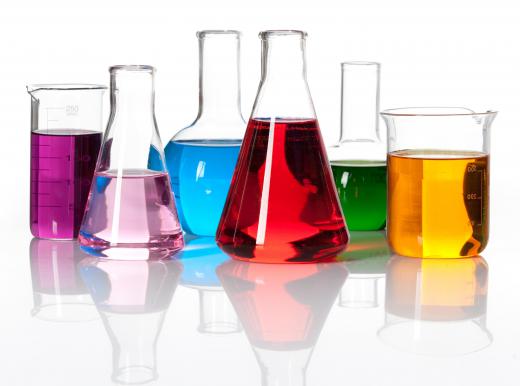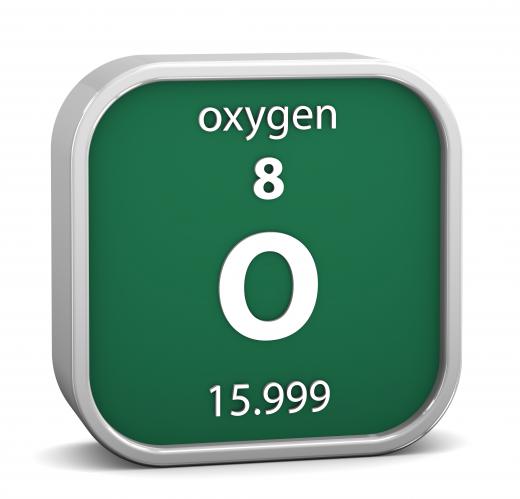In Chemistry, What Is the Oxidation Number?
Atoms combine through the giving and accepting of negatively charged electrons, forming an ionic bond, or sharing electrons, forming a covalent bond. Typically, ionic bonds form between metals and non-metals, while covalent bonds form only between non-metals. An atom’s oxidation number represents the number of electrons it has given to, accepted from or shared with other atoms, and will be positive when it has lost or shared electrons and negative when it has gained or shared another atom’s electrons.
Originally, oxidation meant combining with oxygen; the opposite process, removal of oxygen, was known as reduction. For example, when calcium combines with oxygen, the oxygen removes two electrons from the calcium, acquiring a charge of -2, leaving the calcium with a charge of +2. An ionic bond has formed; calcium has been oxidized and oxygen reduced, giving them oxidation numbers of +2 and -2, respectively. Covalent bonding also involves oxidation and reduction: to form water, two hydrogen atoms combine with one oxygen atom, each sharing an electron with it. The oxidation numbers of the two hydrogen atoms are each +1 and the oxygen atom -2.

Oxidation need not involve oxygen; today, oxidation simply means loss of electrons and reduction, gain of electrons. As a rule, the elements toward the bottom left corner of the periodic table have the greatest tendency to lose electrons, while those toward the top right corner have the greatest tendency to gain electrons. Oxygen has a strong tendency to remove electrons from other elements and is therefore an oxidizing agent; however, other elements can also oxidize. Fluorine, for example, is an even stronger oxidizing agent.

The oxygen oxidation number is usually -2, but many elements can have more than one possible oxidation number. For iron it can be +2 or +3, while for hydrogen it is +1 when combined with non-metals, as in water (H2O), but -1 when combined with metals, as in sodium hydride (Na+H-), where it accepts an electron. The nitrogen oxidation number can vary from -3 to +5. The oxidation numbers of the ions in an ionic compound are equivalent to the charges on the ions, while those of the atoms in a compound always add up to zero.

Elements can combine to form ions that have an overall oxidation number. For example, an atom of sulfur can combine with four oxygen atoms to form a sulfate group (SO42-) with an oxidation number of -2. Ammonia, a compound of nitrogen and hydrogen with the formula NH3, can combine with an additional hydrogen atom to form the ammonium group NH4+, with an oxidation number of +1. This behaves like a metal and forms ionic compounds such as ammonium sulfate ((NH4+)2SO42-), where two ammonium groups combine with one sulfate group.
AS FEATURED ON:
AS FEATURED ON:














Discuss this Article
Post your comments